How To Cool Your Home on Hot Days
This article is Part 2 of an article I recently posted titled, “AC Not Working? Try This if Your House is Not Cooling Down”. I received a few messages from readers wanting more information about additional steps they could take to cool their home. Ask and you shall receive. Here are specific things you can do do to cool your home on very hot days!
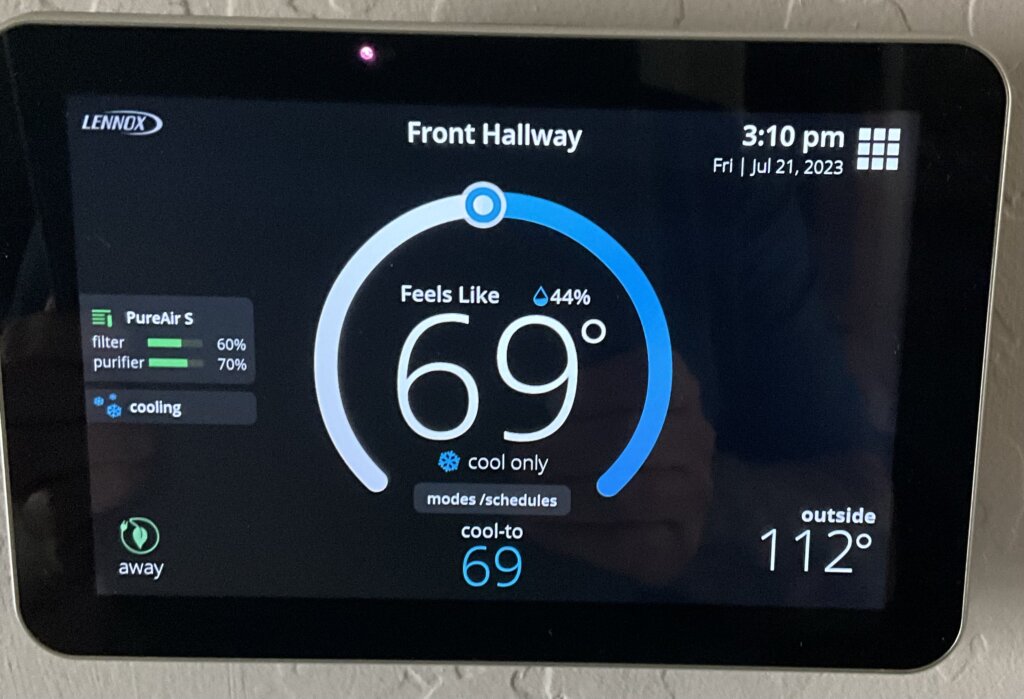
A Bigger AC Unit Isn’t Necessarily the Answer
Turn on the news and all we see are stories about the hottest recorded temperatures on earth. I’m not talking about local news here in Phoenix where we’re used to very hot days, it’s the entire planet! Record heat waves are happening across the U.S., Europe, Asia … frankly, everywhere.
In Phoenix, the record low temperature last night was 97°F – the low temperature. That was recorded in the early morning after the sun had been down all night. So, how do you cool your home on not only very hot days, but the hottest days ever recorded? You might think a bigger AC unit is the answer, but that will most likely create bigger problems once temperatures return to normal. This is especially true if your air conditioner is single-stage or two-stage.
You could technically install a bigger air conditioner to cool your home on very hot days. However, the best thing to do is to reduce the heat load the air conditioner must overcome. Installing a bigger AC unit may help cool your home on very hot days, but it’ll cost you. Not only will it cost you more money upfront and the rest of the year, it will likely make your home uncomfortable most of the year. If your utility company discovers you oversized your air conditioner, they disqualify you from their rebate programs – costing you more money. Again, the right way to cool your home on very hot days is to reduce the heat entering your home.
AC Load Calculations Are Based on Average Temperatures
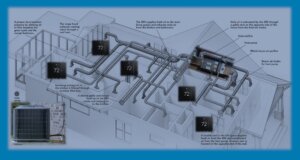 Your AC unit size was (or was supposed to be) determined by a load calculation a.k.a., heat gain analysis. The heat gain analysis is based on what’s required to cool your home on very hot days (using historical average & average high temperatures). Key words being “average temperatures,” and “average high temperatures,” not “record breaking temperatures”.
Your AC unit size was (or was supposed to be) determined by a load calculation a.k.a., heat gain analysis. The heat gain analysis is based on what’s required to cool your home on very hot days (using historical average & average high temperatures). Key words being “average temperatures,” and “average high temperatures,” not “record breaking temperatures”.
As the name implies, a heat gain analysis calculates the amount of heat that can enter your home. The air conditioner is sized to remove that amount of heat. As I mentioned in Part 1 of this series, the design temperature is 75°/108° in most cities near Phoenix. That means, based on historical weather data, your unit is sized to maintain 75° at the thermostat, when it’s 108° outside.
My own home’s air conditioning system can cool my home on very hot days and was sized using this exact design temperature. In fact, my home can KEEP my home at 70° (or lower if I wanted) at much higher ambient temperatures. A few days ago, when we hit 119° at Sky Harbor in the shade, my outdoor sensor read 122°F. That entire day including at that peak temperature, my thermostat was set to and maintaining 70°F. I’m not saying that to annoy you. If you’re reading this, it’s probably because your home is not cooling as well as mine. I’m telling you this so you can know what’s possible and how you can say the same thing. In fact, this article is your instructions for how to cool your home on very hot days – record breaking days!
Here’s How to Cool Your Home on Very Hot Days
Could you install a larger AC unit to cool your home on very hot days, yes. Should you install a larger AC unit to cool your home on very hot days, no. Not only is it going to cost you more money to operate, but you’re also not fixing the root problem – heat gain.
If you had a leak under your kitchen sink, would you buy a bucket to catch the water? Or would you repair the leak?
Think of heat gain as heat leaking into your home. Putting in a bigger AC would be like using a bucket. Stopping the heat from entering your home in the first place is repairing the leak! I mentioned my own home maintaining 70° at 122°. I’m able to achieve that setting because I’ve dramatically reduced my homes heat gain. I repaired the leak.
Here’s what I did, and how you too can cool your home on the hottest summer days – record breaking days.
Install Window Sunscreens (Shade Screens) on Your Home
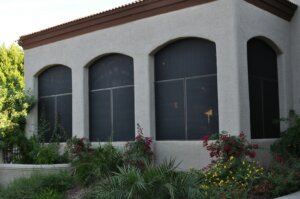 One of the best ways to reduce solar heat gain is installing window sunscreens a.k.a., shade screens on your home. Installing sunscreens on your windows will result in an immediate temperature drop, especially on east, south, and west, facing windows.
One of the best ways to reduce solar heat gain is installing window sunscreens a.k.a., shade screens on your home. Installing sunscreens on your windows will result in an immediate temperature drop, especially on east, south, and west, facing windows.
Sunscreens provide much better results than tint (window film) as they block UV energy before it even hits the glass. Having personally conducted thousands of home energy audits, I’m yet to find a home that wouldn’t benefit from window sunscreens. Due to the low cost of sunscreens, the return on investment is very quick.
PRO TIP: Not all solar shade screens are created equal. It’s worth the investment to purchase a high-quality screen & choose a quality installer. A well-built sunscreen will last 10-years (we guarantee our screen material for 10-years), further increasing your return on investment.
Increase the Attic Insulation in Your Home
Insulation is measured in R-Value. The “R” stands for resistance to heat. The higher the R-value of your attic insulation, the more heat it keeps from entering your home. In Arizona, the attic insulation plays an even greater role in keeping your home cool than your wall insulation. Sure, both are important, but your attic insulation is the most important. I recommend a minimum of R-38 insulation in your attic to cool your home on the hottest of days.
Fix Misaligned Attic Insulation in Your Home
 Using a thermal image camera (infrared camera), I’ve demonstrated to many homeowners the heat entering their home they were unaware of. Many thought their attic insulation was adequate (even abundant), only to discover it was installed improperly (or moved).
Using a thermal image camera (infrared camera), I’ve demonstrated to many homeowners the heat entering their home they were unaware of. Many thought their attic insulation was adequate (even abundant), only to discover it was installed improperly (or moved).
For insulation to work, it must be in contact with the ceiling. If there are any air gaps, the insulation is virtually useless. Even small areas where there are gaps can lead to tremendous heat gain in your home. It’s very common to find this in homes where people complain of “hot rooms,” that are warmer than other rooms in the home.
Stop Air Infiltration (It’s Not Your Windows)
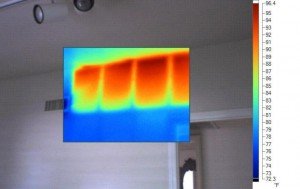 Most of us were led to believe that cold air drafts or hot air leaking into our homes are the result of bad windows. While that is true, many Arizona homes are leaky because the homes design allows hot attic and wall air into the home.
Most of us were led to believe that cold air drafts or hot air leaking into our homes are the result of bad windows. While that is true, many Arizona homes are leaky because the homes design allows hot attic and wall air into the home.
Using a thermal camera often shows heat entering a home around plant shelves, vaulted ceilings, and under stairwells. While insulation is a “thermal boundary,” it is not an “air boundary.” In fact, hot “air” can pass right through insulation. A tell-tale sign of air leakage is very dirty (brown) insulation that was once pink, yellow, or white. What’s happening is the dusty attic air is flowing through the insulation into the house. The insulation is acting like a filter – think about what your AC filter looks like after a month.
Having your attic and walls air sealed will help cool your home on very hot days.
Fix Poor Duct Design & Seal Leaky Ducts
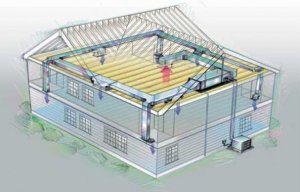 Even the best air conditioner can’t cool your home on very hot days if it can’t remove enough heat. Your return air (where the filter goes) is removing hot air from your home. Many Arizona homes have insufficient return air and simply can’t remove the heat fast enough.
Even the best air conditioner can’t cool your home on very hot days if it can’t remove enough heat. Your return air (where the filter goes) is removing hot air from your home. Many Arizona homes have insufficient return air and simply can’t remove the heat fast enough.
Your supply ducts deliver conditioned air back into every room in your home. However, when improperly designed, and/or leaky, those ducts cannot deliver the proper amount of air to cool your home.
It’s important to remember that simply replacing your AC unit does not fix all those problems. If your contractor recommends duct improvements and/or sealing, it’s not just to sell add-ons. He or she knows you’ll be more comfortable, and your new AC unit will operate better & last longer.
How Your Lifestyle Choices Can Help Cool Your Home
Showering, laundry, and cooking, all add heat & humidity to your home. Many recessed can lights produce significant heat (and are a source of air leakage from your attic). Pulling your hot car into the garage and then propping the door open while you bring groceries in = dramatic heat gain. Leaving the back door open while running back and forth to the barbecue grill – I could keep going but you get it. Of course, I’m not suggesting you stop showering (especially when it’s hot LOL). I share this so you think about the time of day you do certain things and lifestyle choices you can make to reduce heat gain.
Your air conditioner can only do so much! It was not designed for these 115° – 120° days we’re having lately. It was designed for 108° as the “historical hot day”. When you reduce heat gain, it can compete with 115° days, even 120° days.
The Results of Fixing the House to Keep Your Home Cool
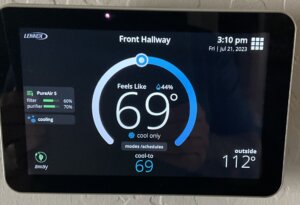 My home is a prime example; I’m able to cool 50° below the outside temperature. The air conditioner itself is only designed to cool 30° below ambient temperature, just like all air conditioners. However, because I have very little heat gain in my home, it retains that cooler air very well.
My home is a prime example; I’m able to cool 50° below the outside temperature. The air conditioner itself is only designed to cool 30° below ambient temperature, just like all air conditioners. However, because I have very little heat gain in my home, it retains that cooler air very well.
And that my friends, is how to cool your home on very hot days and keep it cool. The best part is it will not only keep your home cool, but it will also greatly reduce your power bill.
In this photo you can see this air conditioner is set to 69°, the room temperature is 69°, and it’s 112° outside when taken. A 43° temperature delta! This is possible because my home is capable of allowing in very little heat – not because the air conditioner is more powerful.
How Magic Touch Mechanical Became a Leading Expert on Keeping Homes Cool
Read our story from our humble beginnings 26 years ago, to becoming nationally recognized as a leader in air conditioning & heating, home performance, and home comfort & efficiency improvements.
If you want to see more like this, follow us on social media to stay up to date with ways to improve your home comfort, efficiency, and value.

Author: Rich Morgan, CEO Magic Touch Mechanical

Magic Touch Mechanical
Email: Info@MagicTouchAir.com
URL: https://airconditioningarizona.com/





Fireplaces, Fire Pits, Heating & Air Since 1997. There's Magic in the Air!